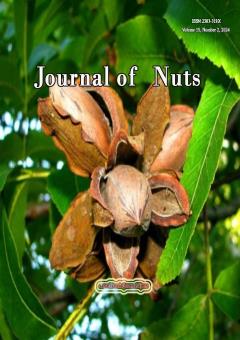-
-
List of Articles
-
Open Access Article
1 - Price Movement Influences the Major Coconut Products Production in Fiji
Divnesh Swamy Shamal Kumar William Kerua Owais Wani Natasha Raj -
Open Access Article
2 - Physio-Biochemical Changes of Some Pistachio Rootstocks in Response to Drought and Recovery Periods
Mohammad Hosein Shamshiri Mahboubeh Hoseini Mohammad Reza Dehghani -
Open Access Article
3 - The Effects of Various Concentrations of IBA Hormone on Rooting of ‘TF92’; New Peach-Almond Hybrid under Ex- vivo and In - vitro Conditions
Ruhollah Haghi Ali Imani Ali Torkashvand Marzieh Ghanbari Jahromi -
Open Access Article
4 - Application of Microwave-Assisted Method for Lutein Extraction from Pistachio Waste
Rama Ahmadi Masoud Honarvar Mehrdad Ghavami yousef Daali -
Open Access Article
5 - Physiological, Biochemical, and Developmental Responses of some Pistachio Genotypes under Drought Stress
Mostafa Ghasemi Shiva Ghasemi Mehdi Mohammadi-Moghadam Saeid Kashanizadeh Mansoore Shamili -
Open Access Article
6 - The Effect of Ascorbic Acid on the Formation of the Separator Layer of Walnut Fruit from the Pedicel and Acetylene Gas as Ethylene Synergism in Accelerating Fruit Ripening
Reza Khosravi Zanjani Majid Abdouss Sholeh Kazemifard -
Open Access Article
7 - Comparing Aerodynamic Terminal Velocity of Open and Closed Mouth Pistachio Nuts Using Wind Column
Kobra Heidarbeigi Sadegh Samadi
-
The rights to this website are owned by the Raimag Press Management System.
Copyright © 2021-2025







